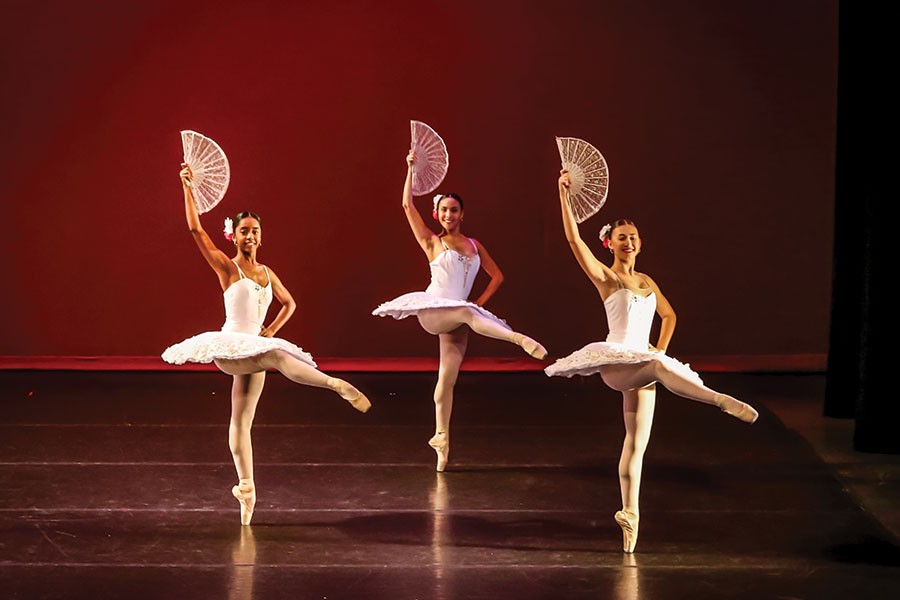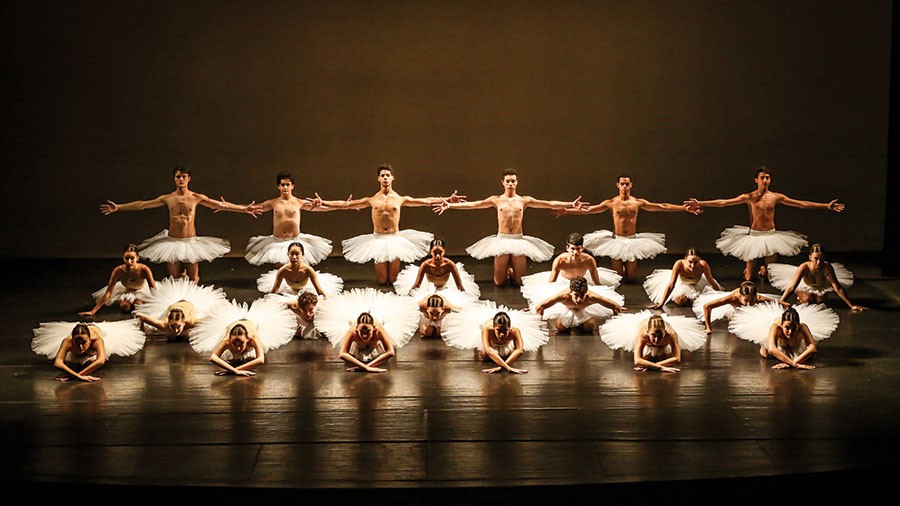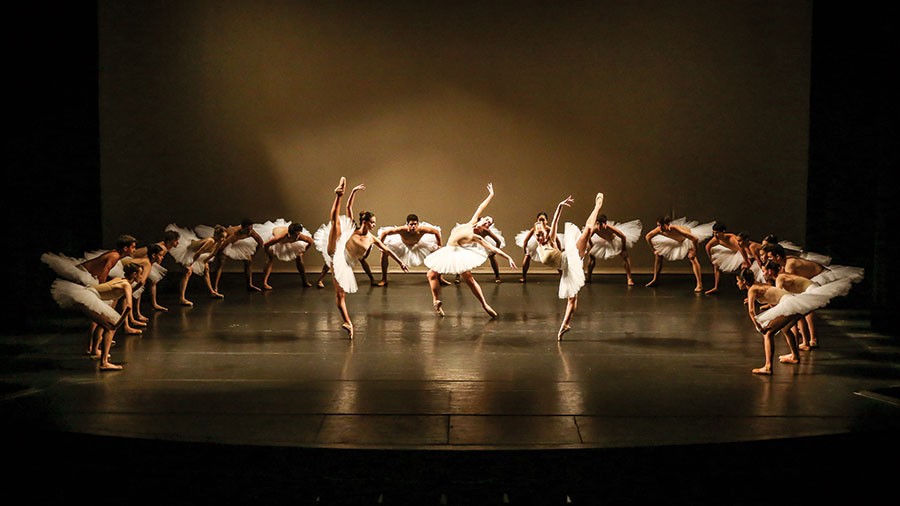As the founders of the Sarasota Cuban Ballet School (SCBS) embark on a new decade of collaborations and recitals, they reflect on how much the company has evolved. High-performing students have flocked to classes from across the globe, scholarships and local children’s programs have been created, and a stellar reputation has been built in the community. Husband-and-wife team Ariel Serrano and Wilmian Hernandez, originally from Cuba, launched the school in 2011. It has gone on to catapult multiple professional dance careers and inspire countless area schoolchildren.
“We are establishing the school as the United States destination for a ballet program based on the Cuban technique,” Serrano says. “We want to be a place where a dancer can receive the support and experience needed to launch a career.” And that begins with proper, highly disciplined training. The Cuban style of ballet is renowned for athleticism, passion and grace, and it incorporates influences from the major classical schools of ballet (Russian, British, French and Italian). Developed in the 1940s by Cuban dancer Fernando Alonso, the Cuban style has produced some of the world’s most lauded dancers, and professional companies are increasingly embracing the techniques. The Royal Ballet’s Carlos Acosta, as well as former American Ballet Theatre principal dancers Jose Manuel Carreño and Xiomara Reyes, are among the stars who were trained in the Cuban style.
Serrano and Hernandez both trained at the elite Cuban National Ballet School and have performed internationally. In 1993, they moved to Sarasota to join The Sarasota Ballet. As the artistic directors as well as the founders of the SCBS, they teach classes at all levels for students from age three to adult. The heart of the school’s program is a rigorous training course designed to ultimately prepare talented, serious young dancers for professional careers. “We provide the highest quality of training in a caring, supportive atmosphere to dance students of all ages, whether or not they pursue a career in dance,” Serrano says.

The student body is diverse, both ethnically and economically, and there is a feeling of family among the dancers. Dancers who move on to professional companies regularly come back to the school to visit, perform and mentor new students. At least one third of the pre-professional dancers receive scholarships. Helping students is a major component of the school, and Serrano and Hernandez aim to introduce children in the local community to as many dance opportunities as possible. Charitable, youth-centered causes are deeply dear to their hearts.
Serrano was raised in a poor family in Cuba, and he credits participating in a serious ballet program with preventing him from engaging in risky behaviors. His mission now is to replicate that positive experience from his childhood. As a young boy, Serrano was not interested in schoolwork, and did not understand why he was required to study ballet. But the more he grew and trained, he overcame his negativity and recognized the multiple benefits of the sport. Ballet made Serrano physically strong, stimulated his curiosity and changed his attitude about learning. He realized, for instance, that there was a purpose to learning math (because counting steps and remembering time are crucial skills in dancing). Serrano is committed to providing a similar opportunity to low-income children in Sarasota; he does so through the SCBS passion project, Dance for a Future.

This free two-year program is geared toward students in grades four and five who attend Title 1 schools (where at least 40 percent of the student body is low-income and the population is largely comprised of minorities). These students have minimal exposure to the culture that the community has to offer, and most families cannot afford to pay for their children to attend ballet lessons. Students in the program attend two hours of dance class two afternoons a week, and transportation and snacks are provided. In addition to dance lessons, the students receive dance shoes, leotards and tights (and everything else they may need for classes and performances). Those who demonstrate a commitment to studying dance and stay with the program for the two years are offered scholarships to join the SCBS pre-professional program.

“We honor Sarasota’s distinction as a cultural center that embraces a diversity of students and performers; and we instill in our community an appreciation of the Cuban style of ballet,” Serrano says. “We want to provide a place where young artists can grow and excel on the pathway to becoming professional dancers.” During the pandemic, the company has offered live-streamed performances and is exploring the possibility of presenting a small outdoor show this winter. Classes for all levels and ages have been held at the studio, and staff have strictly adhered to all COVID-19-related safety precautions recommended by the Centers for Disease Control and Prevention, the state of Florida and Sarasota County. Many former students who had “graduated” to professional companies returned to Sarasota to train at the studio in preparation for when their currently closed ballet companies reopen. “Like other businesses and arts groups, this has been a difficult time for us,” Serrano says. “But we are glad to report that we are surviving the pandemic and looking toward the future.” SRQ









